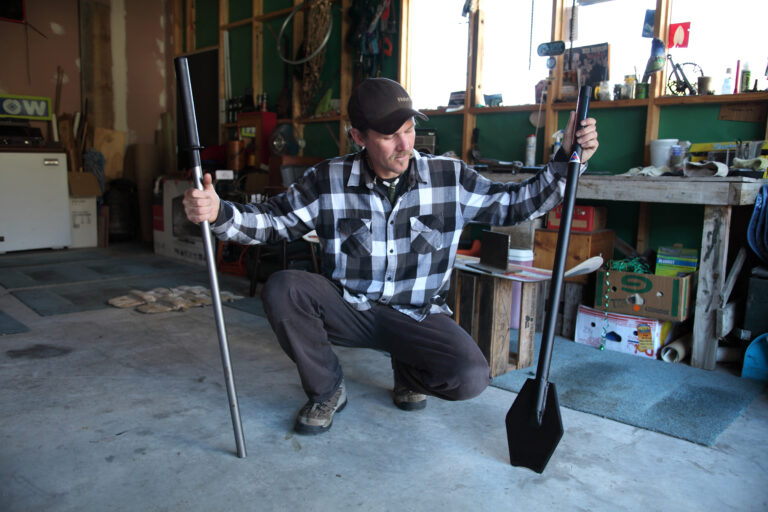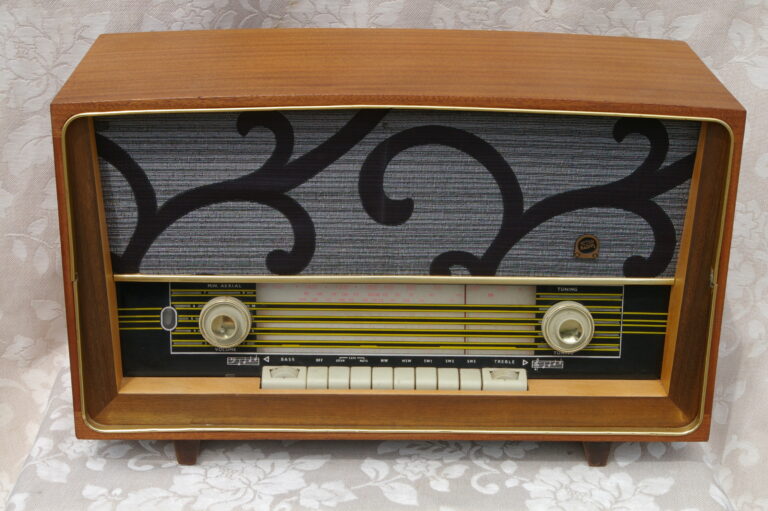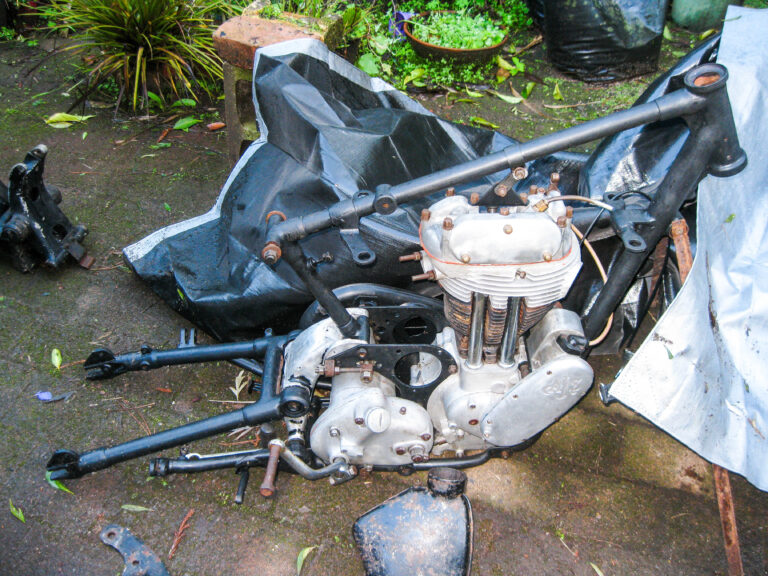More from Shed Issue 81 – building a set of pine bunks
By Ian Parkes
As you might know, the seeds of the men’s shed movement blew here from across the Tasman where it started at the turn of the century.
Apart from scale – the number of men’s sheds in Australia is about ten times the number here – the biggest difference is the support the Aussies get from government for men’s sheds’ contribution to men’s health.
A survey of Australian shed members in 2007 showed 77.4 percent of respondents thought men’s health and companionship was the main activity. This got a number of health professionals excited, including some already working in the field, and suggested itself as a way of accessing more funding.
One of them, Professor John McDonald was campaigning for the development of a national male health policy that would include social as well as physical health. He later became a patron of the association.
Shoulder to shoulder
In 2009 the group made a submission to a select committee hearing into male health. It noted that some sheds had been set up in aged care facilities for men who weren’t interested in the traditional activities provided. The sheds gave them “meaningful recreation, encouraging communication and a place of belonging.”
Another patron, Professor Barry Golding told the first men’s shed conference in 2007 that “men don’t talk face to face; they talk shoulder to shoulder” although he declined credit for the phrase. He said he had overheard another delegate saying it the previous night. Either way, ‘shoulder to shoulder’ became the Australian association’s motto.
Also that year the Australian department of health and ageing invited the association to submit a proposal for three years of funding. Prime Minister Kevin Rudd announced support to the tune of A$3.3 million at the launch of the government’s male health policy at Whittlesea Men’s Club in May 2010.
A New Zealand men’s shed association begins
Both New Zealand and Australia have national associations providing support for not-for-profit men’s sheds. Their main role is to pass on the experience of others in setting up sheds, arranging benefits like discounts, providing health and safety information and guidance on structure, operations and responsibilities – and generally helping groups avoid re-inventing the wheel. The associations don’t control individual sheds.
The New Zealand association, Menzshed New Zealand, was founded in 2013 and acquired a constitution two years ago. The association’s secretary knows of more than 100 sheds around the country and another 25 still in the process of being set up. He says 92 sheds are part of the association.
The Australian Men’s Shed Association dates back to 2005 and was formed after it became clear there were probably around 200 men’s sheds already operating. It now claims a membership of more than 930 sheds.
One of the earliest, the Lane Cove Community Men’s Shed opened in 1998. Sponsorship from North Sydney UnitedCare Ageing enabled them to hire Ruth Van Herk as coordinator which provided the genesis of the national body. She soon started receiving requests for help in setting up other sheds which prompted another member to set up a website as a resource. This led to a database, which became the association’s founding information base, and a manual on how to set up a shed.
How to get ahead in a better shed
What could be better than spending time in a shed? How about a bigger shed, the right tool for the job on hand, and ready access to timely tips and tricks that might save a wince-inducing blunder?
If that sounds like a good deal, you could hardly do better than to take yourself off to your local Men’s Shed and get that project under way there.
They have two main advantages over battling on at home. This first is having all the gear you need, and professional equipment rather than hobbyist power tools. That will help you do a much better job. You will get a lot of personal satisfaction – and more kudos for the final result – if you can achieve nice square corners, things lining up neatly and neat holes that won’t result in screws or bolt heads sitting at funny angles. This is so much easier with solidly mounted table-based equipment like band saws and drill presses.
You know the feeling; you mark out a line, grab the rotary saw or handsaw, cut neatly to the line and it still winds up at a slight angle. Hmm, try again? Or maybe it won’t look too bad from a distance – but you know it’s there…
Plenty of help and advice about
Unless you were in the trade, you may have to learn how to operate the equipment. This is the second main benefit; there’s always someone on hand ready and willing to offer free advice and knowhow.
A quick check of the association’s website will tell you where the closest of these not-for-profit social club-cum-workshops can be found and they all welcome new members.
On the day I visited the North Shore Men’s Shed, a young new member was using the band saw under the watchful eye of more experienced woodworkers. He was pushing the stock against the guide and steadily past the blade. So far so good. His fingers weren’t in line with the blade but, even so, when they got close the wise heads got him to stop, pick up a specially-notched pusher and shove it past with that.
To avoid putting their first-aid skills to the test, or having to answer awkward questions, men’s shed members are united in their desire to avoid seeing anyone cut their fingers off.
Several other members were clearly working by themselves – that’s the norm – but if people want advice there is a workshop supervisor and a trustee rostered on each day specifically to keep an eye on the workshop and help out if needed.
“And there’s plenty of other people who welcome the chance to offer a bit of advice,” says trustee Bernard Gardner. “It’s some people’s favourite thing. And if you don’t like that advice you’ll always find someone with another opinion. But really, there’s so much knowledge here.”
Bernard says a sense of humour and not taking yourself too seriously goes a long way in the shed, and it’s the banter around the lunch table and the workshop that some people enjoy the most.
What do you do when your social circle shrinks?
The social side of shared shed life was a prime reason for the founding of the movement in Australia. So many men who have spent their lives working in groups find it difficult to adjust to the sudden shrinking of their social circle upon retirement. And it’s a cliché but men don’t seem to find it as easy to make new friends without a common purpose as women. Being able to put your feet up sounds fun when you are working long days but dealing with that lifetime conditioning to be productive in retirement is pretty well met by the men’s shed movement.
Originally a bricklayer from the UK, North Shore mens’ shed trustee Winston Garnett and his wife, moved to New Zealand from South Africa when he retired as a site foreman. He signed up virtually straight away, just a few months after the North Shore shed opened, after seeing an item on TV.
He had no particular woodworking skills but, after helping build a sailing dinghy, he built a butcher’s block on wheels for his kitchen.
“You could go and buy one but I thought I’d give it a go.” He says his version is used every day and it still catches his eye. “Yeah, every now and then I notice it and think I didn’t make too bad a job of that.”
He’s since built an oak box and a coffee table each of which utilized more of his increasing skills.
“You do it and then you get some confidence from that for the next one.”
Like most things, if you stick with it you get better at it and Winston enjoys knowing things he’d never have considered tackling in the past are now well within reach. However, the projects are no longer centrestage for Winston. “I just enjoy helping other people.”
Trustee Bernard Gardner says woodworking is the main business of most sheds and that attracts people fitting out or overhauling boat interiors or trailers, or converting vans into campervans.
“We have a young musician here who has decided to make some guitars,” says Bernard.
You don’t need your own project
You don’t have to have a project to join or to keep going when you’ve finished it. The North Shore shed has an ongoing line of work supplying equipment for kindergartens, with a tiny margin on top of the cost of the materials. Wood is ideal for toys and kindergarten equipment, from push trolleys of building blocks or little house models through rocking horses to hand-operated diggers with working booms and buckets. They also do a steady line in repairs.
“We’ve done a few things and then we get a request for the same thing from another kindergarten.” The shed doesn’t advertise its wares but word gets around.
“I think one of the great things about the shed is that there’s no pressure, and the kindergartens understand that,” says Bernard. “Sometimes they want something in a hurry and we do our best but they understand that’s it’s all voluntary and we do it when we can.”
“We’re not short of work but it’s the lack of pressure that allows it to be fun,” he says.
Another common line of work generated by word of mouth is fixing up old chairs or other pieces of furniture for older local residents. Workshop supervisor Dave Wardlaw says some are in a pretty poor state. “They would just end up in a landfill somewhere, so we are contributing to recycling. Although sometimes they are just too far gone and we have to rebuilt them from scratch.”
Club chairman Larry Klassen says one member built a new curved wooden Queen Anne style foot to rescue someone’s favourite piece. He steamed strip of timber and laminated them in a jig before shaping it to suit. That method gave it more strength than a solid piece. “You just couldn’t do that as a commercial job,” says Larry.
Community and charity tasks
The local community board is also well aware of the shed’s capabilities and isn’t shy about leveraging these local resources. Shed members, of course, are happy to oblige.
It prompted two of the most spectacular projects to roll out of the North Shore shed’s doors, two floats mounted on trailers for Christmas parades, a Snoopy aeroplane and a full- size Santa sleigh. The simplest were probably the hundreds of weta boxes they built for a local conservation group, along with some rodent or pest traps.
The only real downside to working on a project at the North Shore Men’s Shed is likely to be having to take it home each day. They don’t have the space to store them, says Bernard, even though the club’s buildings have already expanded twice in two years.
The workshop in Glenfield, admittedly one of the movement’s grander establishments, is well-lit, clean and airy and well-stocked with tools and equipment, dust extractors, safety gear, clamps (you can never have too many) and fasteners of all kinds. It even has a stock of good leftover timber on hand that can be acquired at favourable rates.
“Sometimes we get people visiting from other sheds and their jaws just drop,” he says Winston with a twinkle.
That’s another benefit members appreciate: you rarely suffer the annoyance of having to pop out to the hardware store to get just one more thingummy you didn’t realise you needed.
This mens’ shed is well fitted out
The 300 square metre woodworking workshop, office, kitchen and dining area were built in 2012 after the board of trustees secured a lease from the council in Elliot Reserve, alongside the Glenfield tennis club.
In 2016, a 100 square metre engineering workshop was added at one end, and now an electronics and model-making workshop is being added at the other. Naturally the membership had the experience and skills to complete the fitout to a high standard.
The workshop features a mouth-watering array of thicknessers, planers, saw benches, table-mounted routers, drill presses, lathes and milling machines. Most are connected to a big central vacuum system, and there’s a substantial collection of hand tools. The engineering shop features welding equipment, guillotines and bending rolling and folding equipment.
“It’s pretty old, because no-one uses this stuff now, but it still works,” says Bernard. “It was built to last.”
Several big machines were bought new. Some was donated from deceased estates and several members who keep an eye out for bargains for sale. They recently received a donation of pallet load of sandpaper, which they are sharing with other sheds. Having engineers in the team to fix up and maintain the equipment is also a bonus. It means they have more than one machine for each task and you can find something suitable for almost any job.
There are rules, such as only using new and un-painted timber in the best thicknesser to protect vulnerable blades but. if they are damaged or worn, a report to the trustee will see them repaired, often on the spot with the sharpened spares on hand.
How much to join?
Chairman Larry Klassen says the $90 annual subscription only covers about 40% of the $20,000-plus annual running cost, which includes power for equipment and lighting, the lease and insurance, phone and computer stuff, waste, and consumables including tea and coffee. The rest comes from the small charges they make for their output, and from grants the treasurer diligently seeks out.
The engineering shop also contributes higher value items to the income stream, for example resurrecting an old donated trailer to roadworthy condition for sale – another recycling success.
Members are encouraged to help out where they can. “They should feel free to run out and get some more biscuits if we run out,” says Winston.
The heart of the building is, you guessed it, the kitchen-dining room. Generally, the shed keeps regular working hours from force of habit, with people stopping for smoko and lunch, where the real business of the day is conducted: nattering.
“We have people who just come in for a coffee and a natter,” says Bernard. “And that’s fine.”



